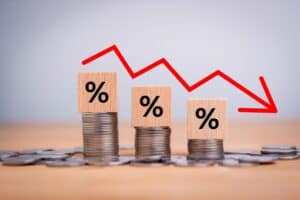The rise in the cost of living has left almost half of SA's population resorting to purchasing groceries on credit, while 20 million have gone a year without electricity.

Close to 20 million South Africans have sat in the dark because they can not afford to keep the lights on.
As the cost of living climbs and many feel the pinch of rising costs, a study has found that more than 40% of South Africans have gone without electricity because of the price.
These numbers were published on Tuesday by the FinScope Consumers South Africa 2023 Survey. The survey also revealed that almost half of the country’s adult population has been without electricity for the past 12 months.
ALSO READ: Food prices for low-income consumers increasing again
FinScope probability is a yearly survey established in 2003 by FinMark Trust to regulate South African adults’ interaction with financial services end products. The study was conducted across the country’s nine provinces, with 5 600 participants in both urban and “deep” rural areas.
FinMark Trust Senior Data and Analytics Specialist Jabulani Khumalo told SAfm that the Covid-19’s legacy and the persistent load shedding were some of the contributing factors to the fact that approximately 8 million households cannot afford electricity.
“Spending about 12% of income on home energy – this includes electricity, is considered highly burdensome for South Africans.
“FinScope data does show that around 3 million adults are still recovering from the impacts of Covid-19,” Khumalo added.
READ MORE: Food prices for low-income consumers stable, but still too high
Electricity alternatives
The study’s findings revealed that 41% of South Africans have gone without electricity because of a lack of affordability. While 77% of those who took the survey said they experienced load shedding daily and another 37% said they experience weekly outages.
Moreover, if load shedding persists half of the nation’s households are reported to not have the mechanisms to raise money for alternative energy solutions.
Of those who took part in the survey 29% said they had no means or plans to raise money for alternative energy like solar or gas. And an additional 17% said they would ask friends and family for assistance.
NOW READ: National minimum wage: Can you survive on less than R5k per month?
SA adults buying groceries on credit
The study also found that 40% of South Africans cannot afford to buy food with cash and, as a result, are borrowing money or using credit cards to finance their grocery purchases.
“From the data, the living costs are rising against a fixed salary, leaving most people with less disposable income and very limited resources to cover monthly living costs. As a result, 38% or around 17 million adults’ income is not enough for living expenses. Therefore, it is not surprising that 40% of adults are reported to be borrowing money for food,” said Khumalo.
This number has increased by 27% since 2003. While formal credit has increased from 26% to 60%.
According to Khumalo, about 30 million people are living above the poverty line, while approximately 14 million people suffer from food poverty.
Furthermore, the specialist said there was a need for economic growth to tackle these disparities.
MORE TO READ: How extortion syndicates are taking over Cape Town
WATCH: The General Industries Union of South Africa (Giwusa) president Mametlwe Sebei on the impact of the high cost of living on the working class and marginalised group as of March 2024






